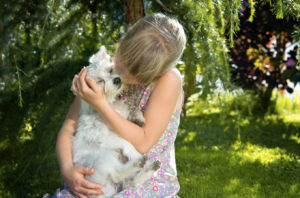Dog Food vs. Human Food: What Human Food Can Dogs Eat?
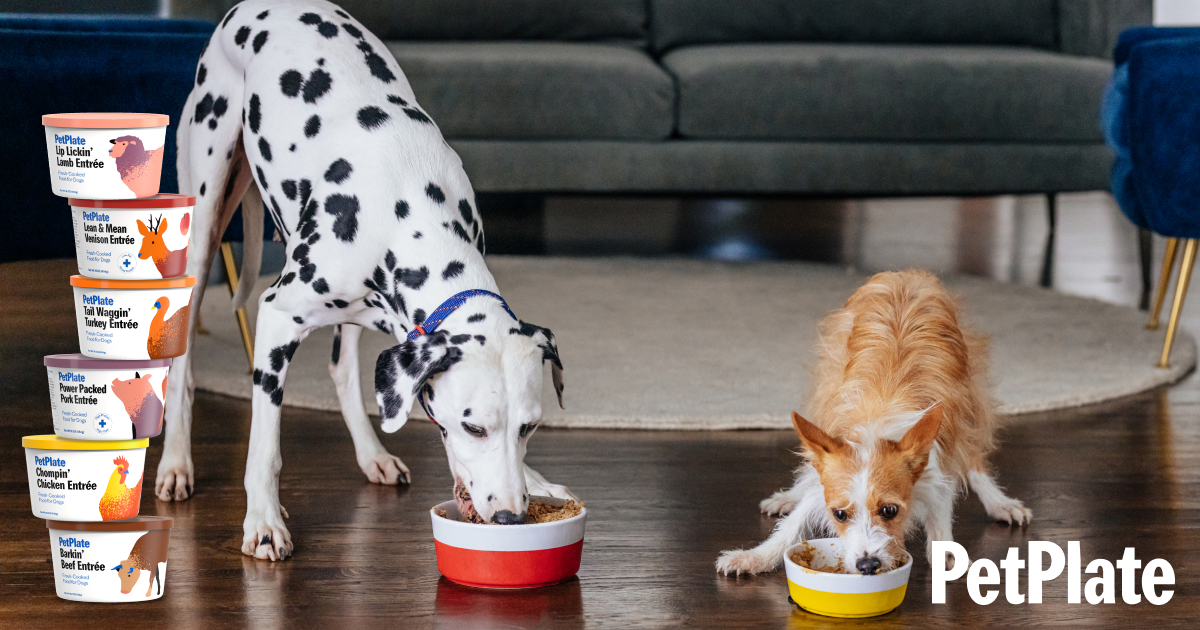
When it comes to your dog’s food, do you know what you’re really serving? With so many options out there, it can be easy to grab the first economy bag you see on the shelf and call it a day. But as a responsible pet parent, it’s your job to do the research and serve healthy, nutritious meals worthy of this important family member.
In this post, we’ll dive into the truth behind some commercially-prepared dog food, what to know about feeding your dog “human” food (including what human food can dogs eat?), and a great solution for those pet parents who have been wanting to try out a human-grade diet for their pup.
- What’s in My Dog’s Food?
- Can I Feed My Dog Human Food?
- What Human Foods Are Bad for my Dog?
- What is Human-Grade Dog Food?
Can I Feed My Dog Human Food?

Now that you know to avoid all of the questionable ingredients above… What’s a responsible pet owner to do? Is it a better idea to just feed your dog human food, then?
The answer to this is a little tricky. Before we explain, let’s dive into some of the do’s and don’ts when it comes to feeding your dog human food instead of designated pet food.
What human food can dogs eat?
Dogs are carnivores, but they’re not “true” carnivores like cats. In the wild, dog’s commonly eat scavenged vegetables and fruits in addition to their usual diet. This means that dogs are actually quite open to a variety of different foods. Here’s what human food dogs can eat:
- Plain, non-processed meats
- Fish
- Vegetables
- Fruits
However, just because your dog CAN eat many of the foods that fall into these categories, not all of them will be a particularly healthy choice. We have to take into account the differing metabolism of our dog and the overall health benefits of every ingredient. That said, while it requires a lot of forethought, it’s certainly possible to develop a balanced diet of healthy human food for dogs.
What are the healthiest foods for dogs?
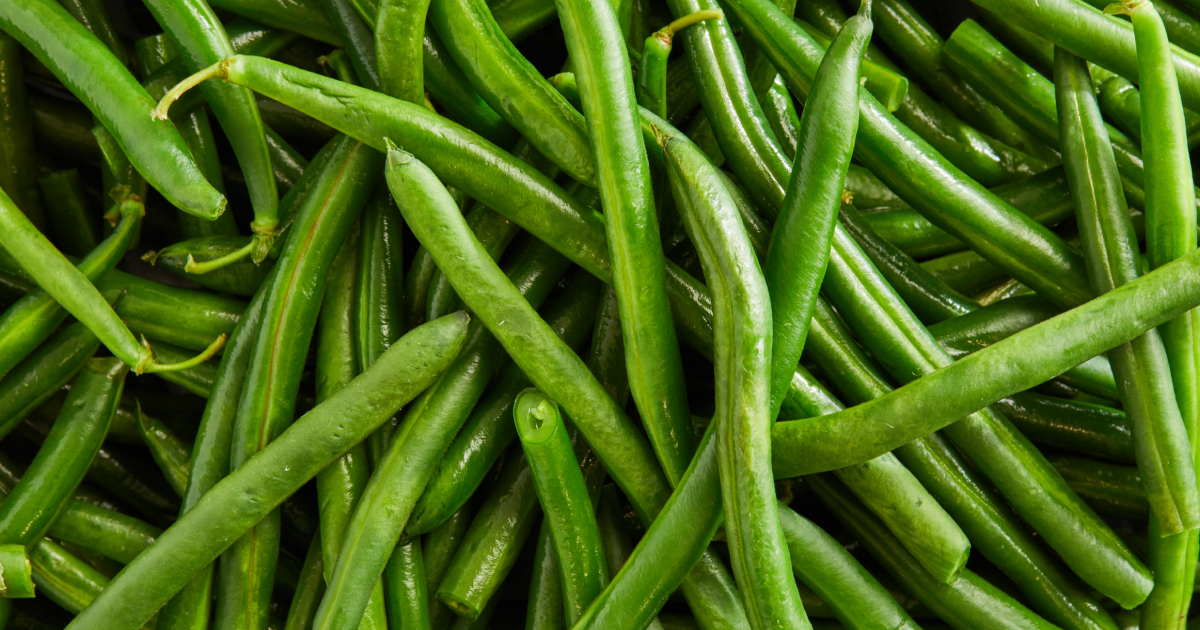
The good news is there are tons of healthy “human” foods that you can give your dog that are actually good for them!
Some of the best foods to serve are:
- Turkey and chicken – easy to digest and a good source of protein
- Eggs – Contains plenty of vital vitamins and minerals, plus protein
- Fish, especially salmon – great source of omega-3 fatty acids
- Grains – Brown or white rice is particularly easy to digest
- Carrots and green beans – good source of fiber, minerals, and vitamins
- Apples and bananas – High in fiber, antioxidants, minerals, and vitamins
- Seedless watermelon – Packed with nutrients and low in calories
- Peanut butter – delicious treat that’s a source of protein and healthy fat
However, keep it in mind that it’s all in moderation. While table scraps are fine every now and then, it shouldn’t be an everyday event. Your dog has unique nutritional needs, so simply making another serving of your family’s dinner and giving it to your pup can be risky if you’re not paying attention.
Here are some examples:
- While carrots are a great treat that can help remove plaque from your pup’s teeth, too much Vitamin A can be toxic.
- White rice can help with an upset stomach, but too much can cause a rise in blood sugar.
- Potatoes can be a great treat, but it’s better to mix with fiber-rich sweet potatoes.
- Eggs must be fully cooked, as raw eggs can lead to biotin deficiency in dogs.
- If you’re serving fish, take special care to remove all bones, which your dog can choke on.
- Peanut butter should be unsalted, with no added sugar or sweeteners.
What human food can I feed my puppy?

While puppies can safely eat the same human foods as adult dogs, you need to consider their special dietary needs. Puppies need a different balance of nutrients compared to adult dogs to ensure they grow healthily, without running into any nasty developmental health issues.
Puppies require a high amount of protein, the right balance of fat, calcium, and carbohydrates for optimal growth. They also need to eat a lot – a puppy needs to get many more calories than an adult dog of the same breed. I’d recommend seeking a vet’s advice to ensure you devise a balanced diet plan.
You should also avoid human foods that are particularly rich. As an example, pork is high in fat content and may be difficult for a puppy’s digestive system to digest. Instead, stick to easier foods to digest, such as chicken, turkey, rice, and carrots.
What can you feed a diabetic dog?
If your dog is diabetic, you have to be more careful. Some human foods contain high amounts of sugar, which may dangerously affect your dog’s glucose levels. That said, there are some human ingredients that are perfectly safe in moderation, and may even help your dog get some vital nutrients.
Most diabetic dogs do well on a high fiber and low fat diet. Fiber helps slow the entry of glucose into the bloodstream, whereas low fat meals can help keep your dog’s weight in check. This is important – keeping your dog at an ideal weight helps their cells use insulin more effectively.
With this in mind, here’s a short list of healthy human foods for diabetic dogs:
- Plain chicken
- Brown rice
- Quinoa
- Carrots
- Green beans
- Cauliflower and broccoli
What is in My Dog’s Food?
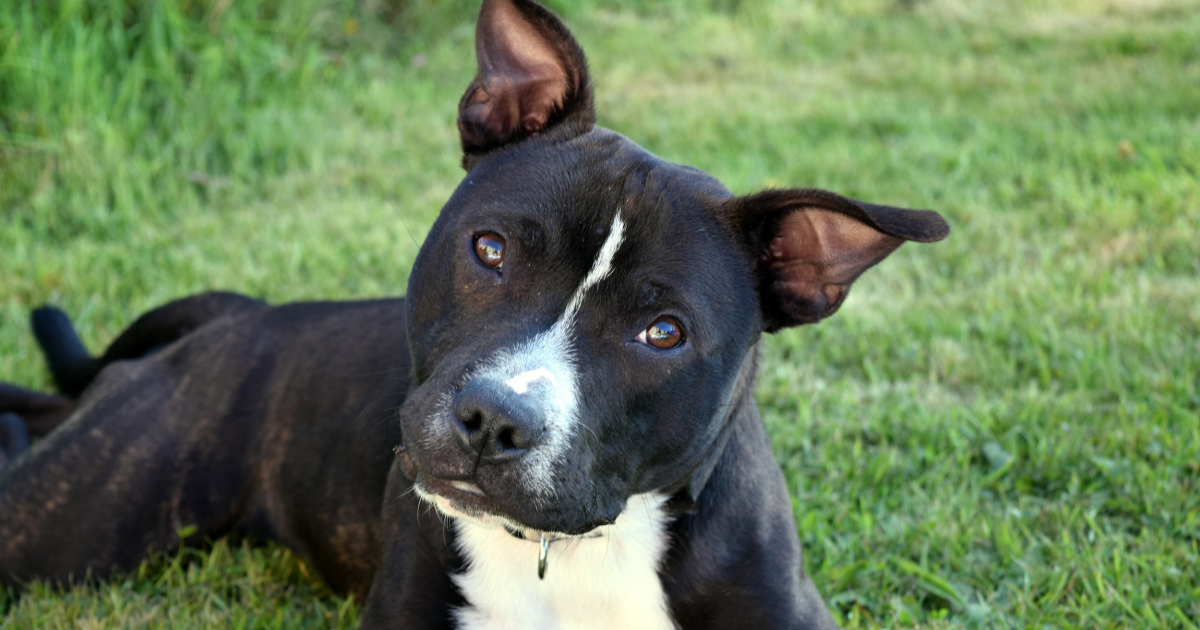
Have you ever looked at the ingredients list on your dog’s food? If you’re feeding them a commercial dry kibble, you might be a little surprised. No matter how many healthy claims and marketing jargon you see on the front, a quick rundown of the ingredients may reveal a less-than-ideal nutritional profile at best, and some pretty gross stuff at worst.
What is beef meal and chicken meal?
If you see an unspecified “meat” or “meat meal” listed, for example, it’s important to know what that means. With such an ambiguous label, it could be just about anything—including rendered and highly-processed meats. If you’re not familiar with the rendering process, this is when manufacturers take a bunch of meats from potentially-questionable sources (tumor-filled cows mixed with other animal scraps, for example) and cook it down into a powdered “meal.”
“Meat byproducts” is another one to watch out for; this refers to parts of the animal that are technically edible… but certainly not nutrient-dense. Think chicken feathers, beaks, and feet. Vague product labels such as “with beef” only require that 3 percent of the total product is beef, and “beef flavor” simply implies that there is enough beef in the product to be detected. To avoid this, look for specific meats listed in the ingredients, such as chicken, lamb, or beef.
If you’re not choosing whole foods, you might also be serving a host of chemicals and pesticides to your pup. And don’t even get us started on preservatives and artificial ingredients. Ethoxyquin, butylated hydroxyanisole (BHA), and butylated hydroxytoluene (BHT) are the most common offenders, and have been linked to cancer in animals.
What to know about dog food quality standards
Wondering how well-known companies can get away with this? The simple answer is that there’s a lack of government oversight when it comes to the dog food industry. The Food and Drug Administration (FDA) only requires that pet food be “safe to eat, produced in sanitary conditions, contain no harmful substances, and be truthfully labeled.”
Here at Pet Plate, we believe your dog deserves (in fact, needs!) better than this.
What Human Foods Are Bad for my Dog?

There are also plenty of foods that are off-limits to your dog. Here are the biggest offenders and why they’re so harmful to your pup:
- Chocolate – contains specific chemicals (methylxanthines) that are toxic to dogs
- Garlic – contains toxic compounds called disulfides and thiosulphates
- Grapes – researchers haven’t pinpointed the exact substance in grapes and raisins, but we know they are highly toxic even in small amounts
- Avocados – contain a toxic substance called persin
- Cherries – contain toxic cyanide, which is found in cherry pits
- Some types of nuts – Macadamia nuts in particular are highly-toxic; others (like cashews, walnuts, and pistachios) are very high in fat and should be limited
Other food and food groups, like dairy and certain grains, can cause tummy issues in some dogs. Limit these and keep an eye on common food sensitivity symptoms like diarrhea and vomiting. And of course, avoid anything high in sugar, sugar substitutes, fat, salt, or other “junk”! It should go without saying but never give your dog alcohol or any products containing it.
If you believe your dog has eaten something toxic, call your vet or the Animal Poison Control Center right away to get help. The latter is a 24-hour emergency line that connects you to experts who can walk you through common symptoms and help you determine when to take your dog in. They also have a helpful app you can download!
Concerns over toxicity is a reason many dog owners point to for why you shouldn’t feed your dog human food. After all, while commercial dog foods have their own problems, they don’t run the risk of accidental poisoning. Many also cite concerns of weight gain, as many owners do not correctly portion human foods.
Overwhelmed yet? You’re not alone. While making home-cooked dog food is certainly more popular these days, it’s a lot of work to keep up with. It’s also not a guarantee for nutritional standards; in fact, researchers from the University of California, Davis, School of Veterinary Medicine found that 95% of homemade diets don’t meet the nutritional requirements dogs need.
The better solution? Consider switching your pet over to a well-researched, human-grade dog food, as we’ll get into next.
What is Human-Grade Dog Food?
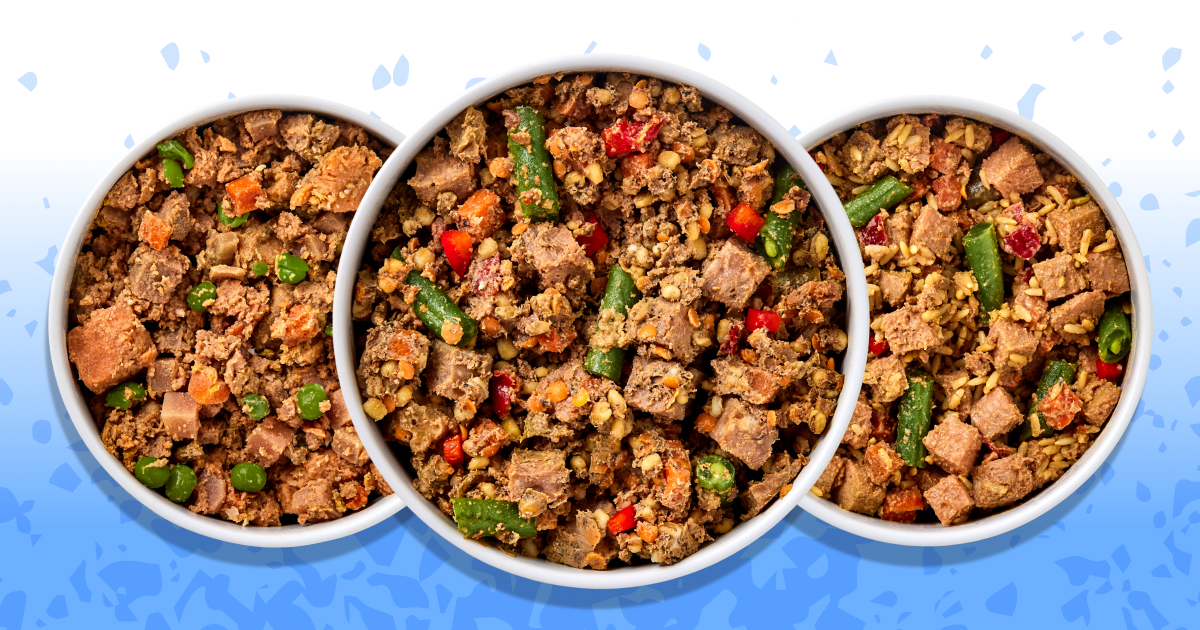
So, what exactly is human-grade dog food? Simply put, the label tells us that the food is edible for humans – it’s human food dogs can eat. The food also needs to meet federal manufacturing and packaging regulations set by the Association of American Feed Control Officials (AAFCO).
Pet food labeled “human-grade,” is produced with higher standards overall. Meals must adhere to FDA standards for what goes into human foods, which are much more strict. For meat in particular, you can feel confident knowing you’re getting the same quality that you’d get at your local grocery store or butcher.
Is human-grade dog food better than kibble?
In most cases, yes! But it’s up to you to do the research and make sure the food you select is the best choice for your pup. Look beyond the human-grade label and check out the ingredients list, keeping an eye out for the hidden ingredients we mentioned earlier, making sure they are healthy human food for dogs too.
Another important factor is how fresh the food is. If you’ve ever downed a meal full of processed junk food, you probably know why. Fresh (and whole) food makes us feel better, since your body can use the nutrients immediately—the science is the same for both humans and canines alike!
If you’re not ready to make the full switch yet, consider slowly adding in fresh food as a topper to your pet’s regular meals. In one study, Purdue University researchers found that simply adding fresh vegetables to dogs’ diets suggested the prevention or slowing of certain cancer cell growth.
How do you store human-grade dog food?
Unlike dry kibble that uses preservatives to last, you’ll need some space in your fridge or freezer for your fresh, human-grade dog food. Pet Plate meals, for example, arrive at your door frozen. You’ll need to defrost the container in the fridge or microwave; once defrosted, it should be kept in the fridge and used within 5 days.
How to selecting the best human-grade dog food
Just like how humans are all a little different, your dog may have unique nutritional needs based on their breed, activity level, weight, and other factors. Some dogs might need to lose a few pounds, others may need a special heart-healthy diet, and others may just be extra picky! Whatever the case may be, Pet Plate can help.
We take quality control and nutritional expertise very seriously, and every batch of food we make is flash-frozen to lock in the freshness. Plus, it’s formulated by our very own veterinary nutritionist, so you know you’re serving the best of the best to your pup.
Why do dogs like human food?
There are various factors at play here. First off, human foods tend to be nutritionally more dense than many low-grade commercial dog foods. In addition, they tend to be tastier. With this in mind, it’s no wonder that your dog may turn their nose up at kibble to come beg at the dinner table!
Studies have also shown that dog’s are perceptive – they can tell you are really enjoying that steak right now, and they want in on the action. On the other hand, none of us are chowing down on kibble and enjoying it immensely, so your dog thinks that your food is simply better than theirs.
And would they really be wrong? Eating kibble every day, that’s filled with meat byproducts and artificial ingredients, doesn’t exactly sound enjoyable. Of course, some human foods can be dangerous for dogs. But many aren’t. With the correct preparation and nutritional balance, human food could be a much healthier source of nutrition for your pup.
Get Fresh-Cooked, Personalized Meals for Your Pup
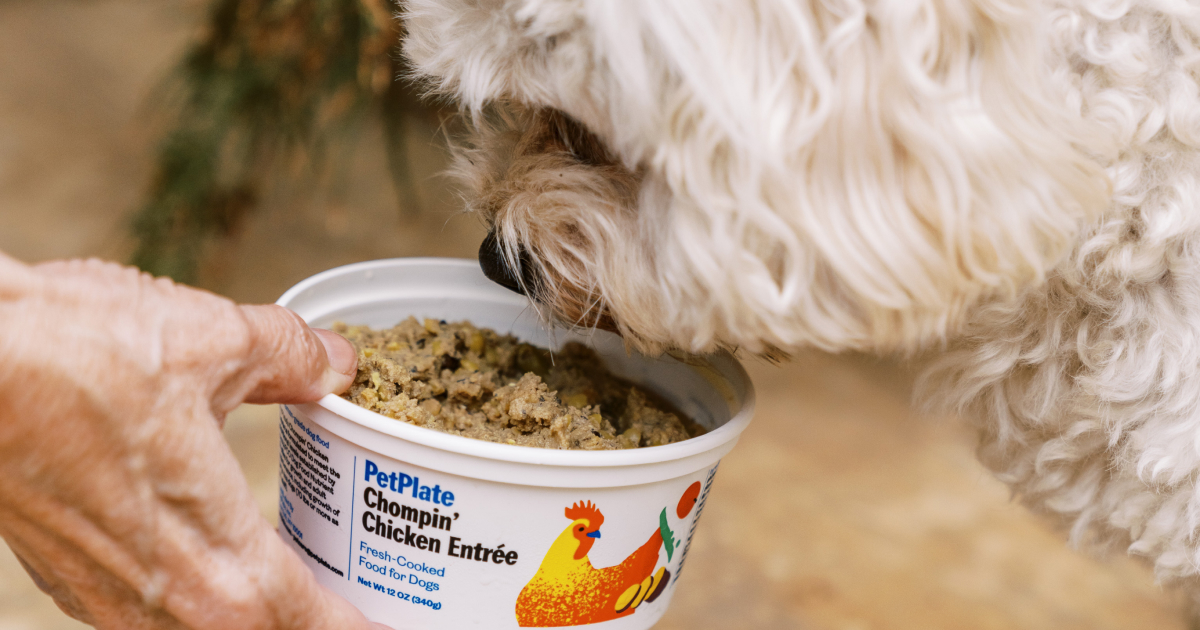
Ready to see the Pet Plate difference? Answer a few quick questions about your dog and we’ll put together a customized meal plan. Choose from four tasty flavors to find your pup’s favorite, and then sit back and enjoy the convenience of deliveries right to your doorstep. No cooking, no shopping, no prepping, no cleaning, and no worrying if your best friend is getting the nutrients they need. It’s a win-win-win!

